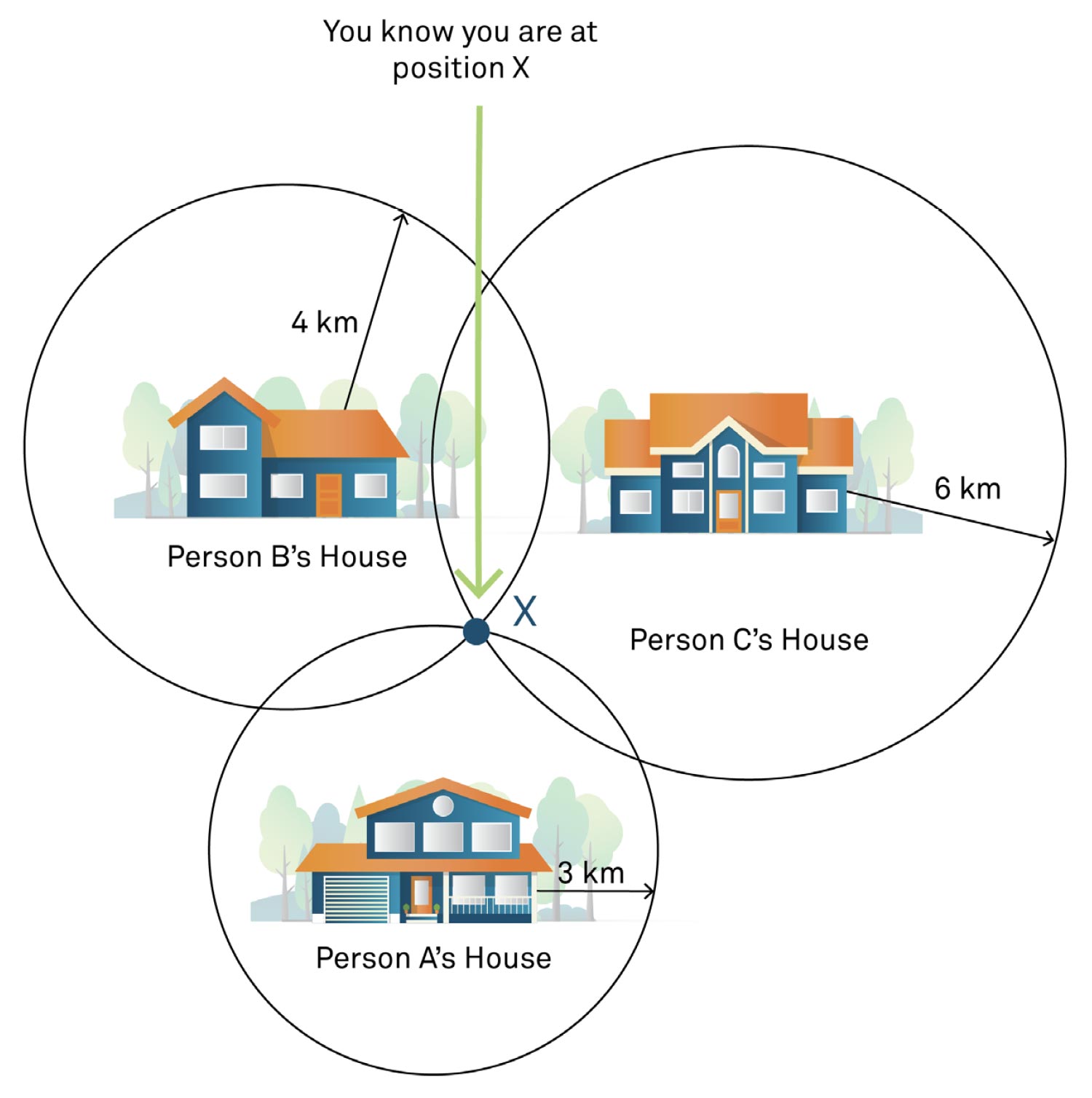AGRICULTURE
GNSS radio signals are quite complex. Their frequencies range from 1.17 to 1.61 GHz (gigahertz), or 1.17 to 1.61 billion cycles per second. For comparison, GNSS operates at frequencies that are higher than FM radio but lower than a microwave oven. By the time GNSS signals reach the ground, they are very, very weak. We will provide more information about how the user segment deals with this in Chapter 2.
“I have never been lost, but I will admit to being confused for several weeks.”
If you have a GNSS receiver, it is unlikely that you will ever be lost again. GNSS positioning is based on a process called “trilateration.” Simply put, if you don’t know your position, but do know your distance from three known points, you can determine your location.
Let’s say you are 3 km (1.9 miles) from Person A’s house. All you know is that you are on a circle 3 km (1.9 miles) from Person A’s house, as shown in Figure 4.
But if you also know that you are 4 km (2.5 miles) from Person B’s house, you will have a much better idea of where you are since only two places (x and y) exist on both circles, as shown in Figure 5.
With a third distance, you can only be in one physical location. If you are 6 km (5.6 miles) from Person C’s house, you must be at position X since this is the only location where all three circles (distances) meet.
In Chapter 2, we will show you how the technique of trilateration is extended to GNSS. Conceptually, we are just going to extend the above example by replacing the houses with satellites.
